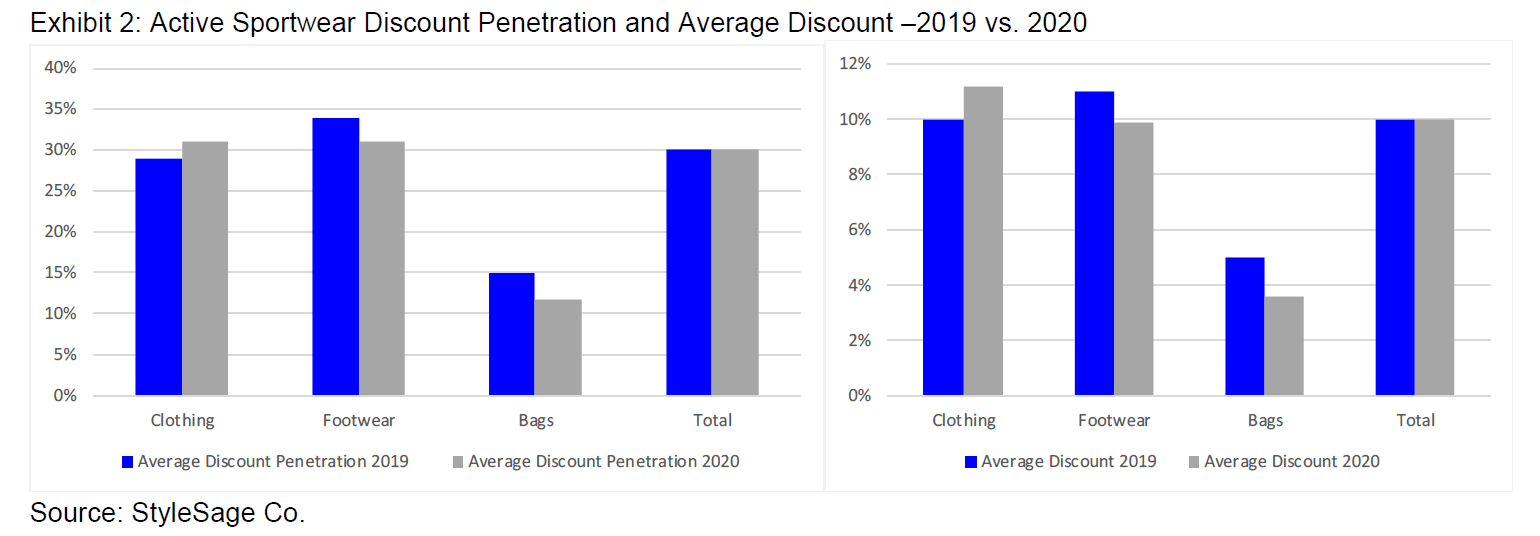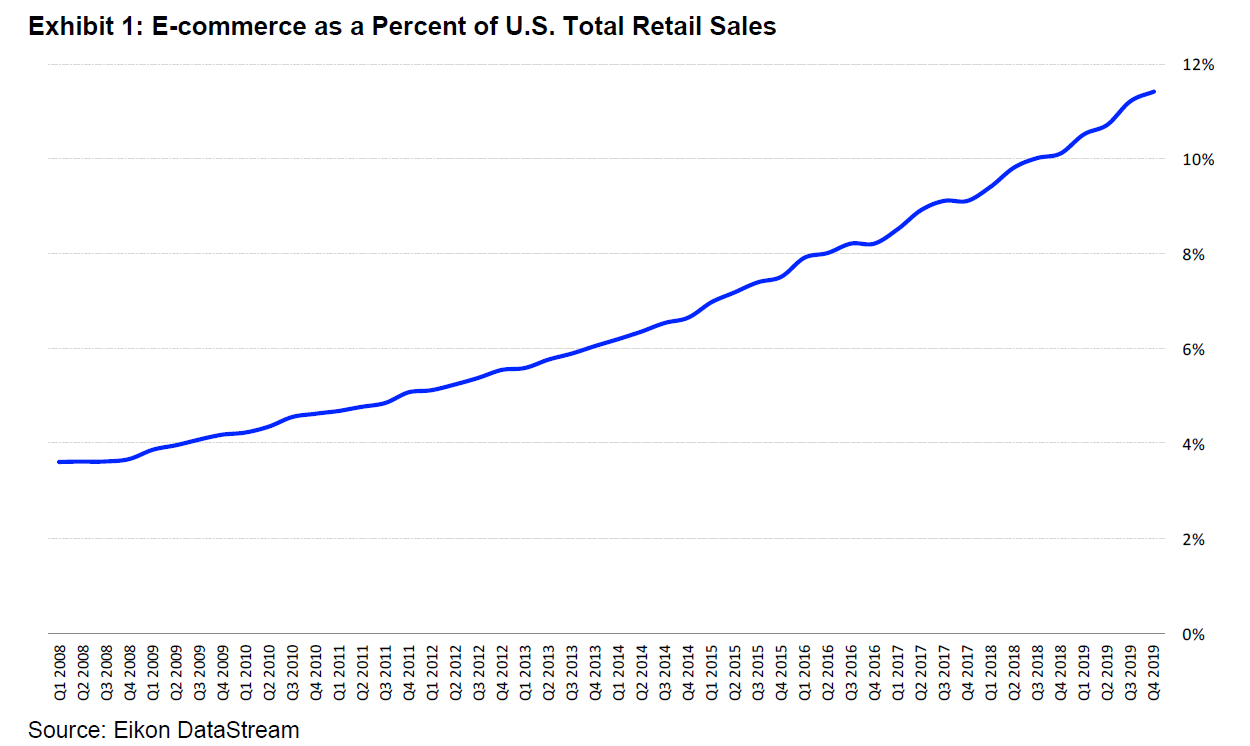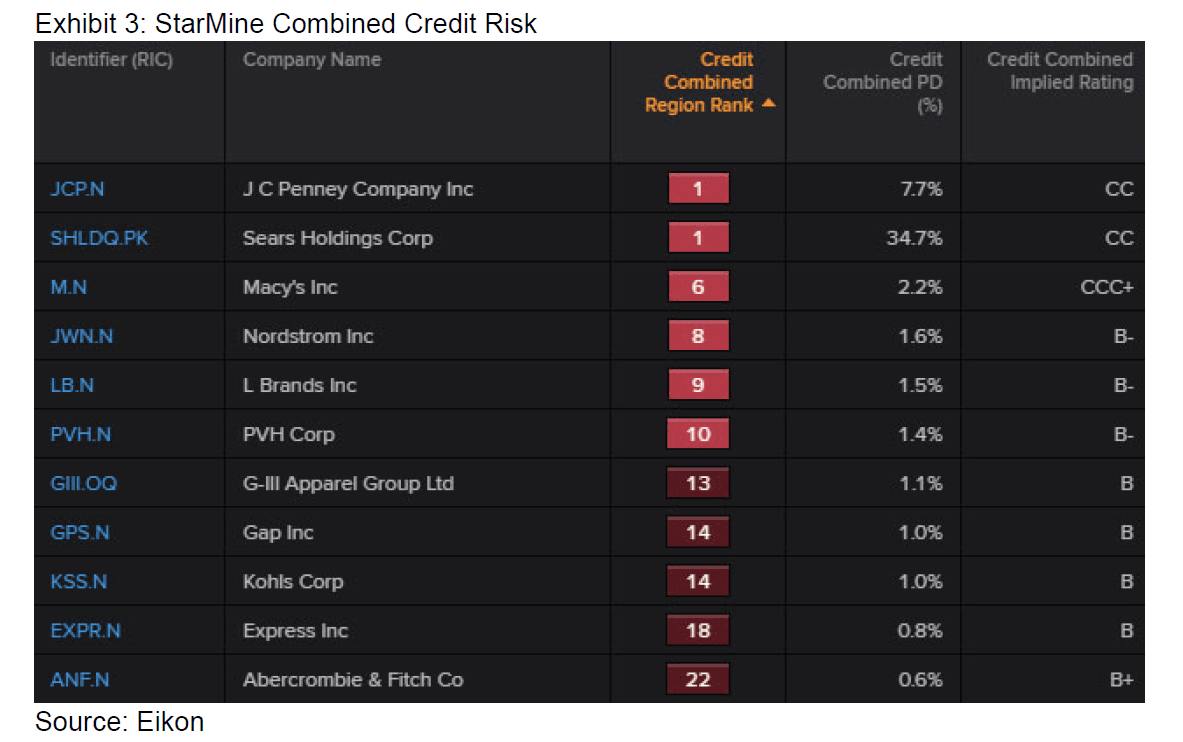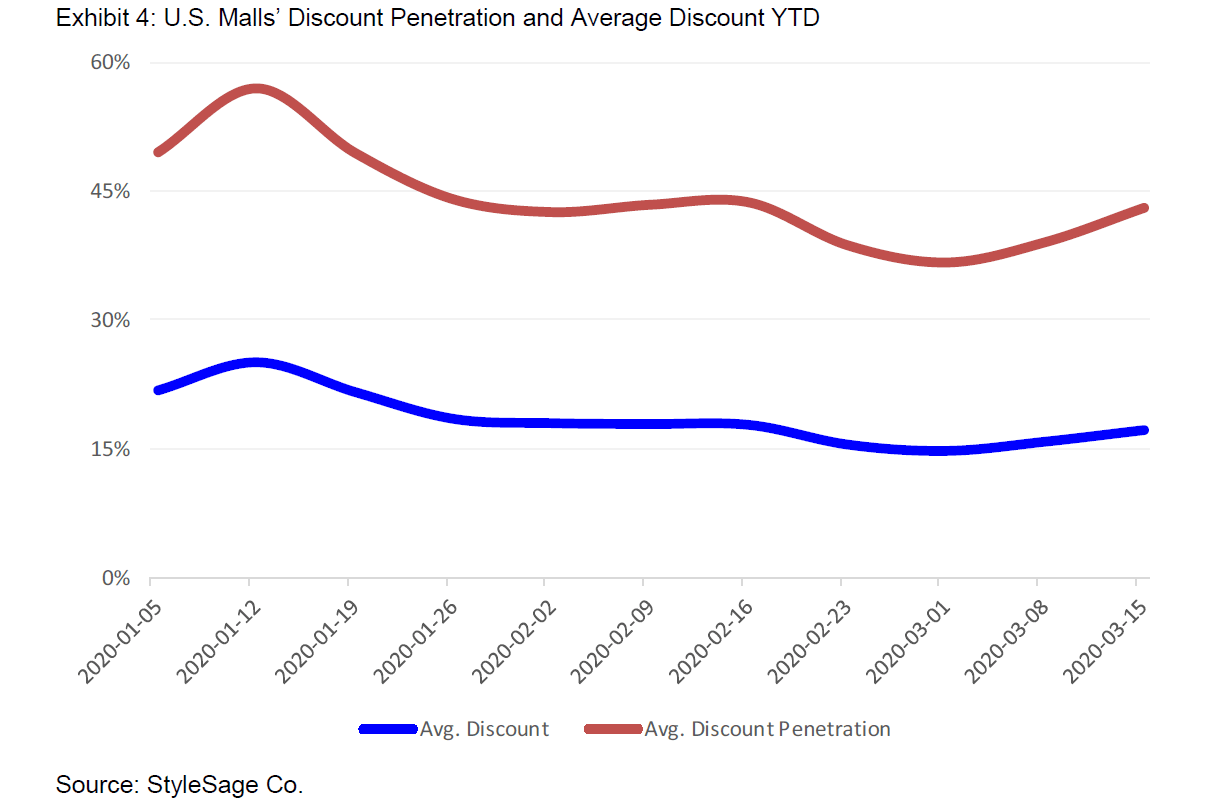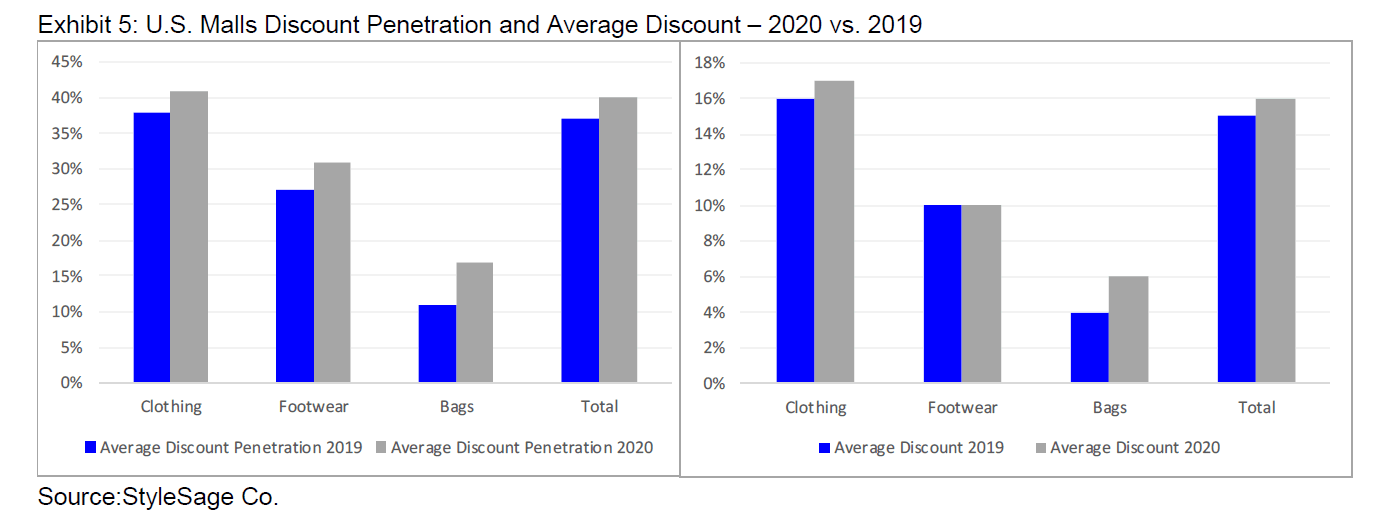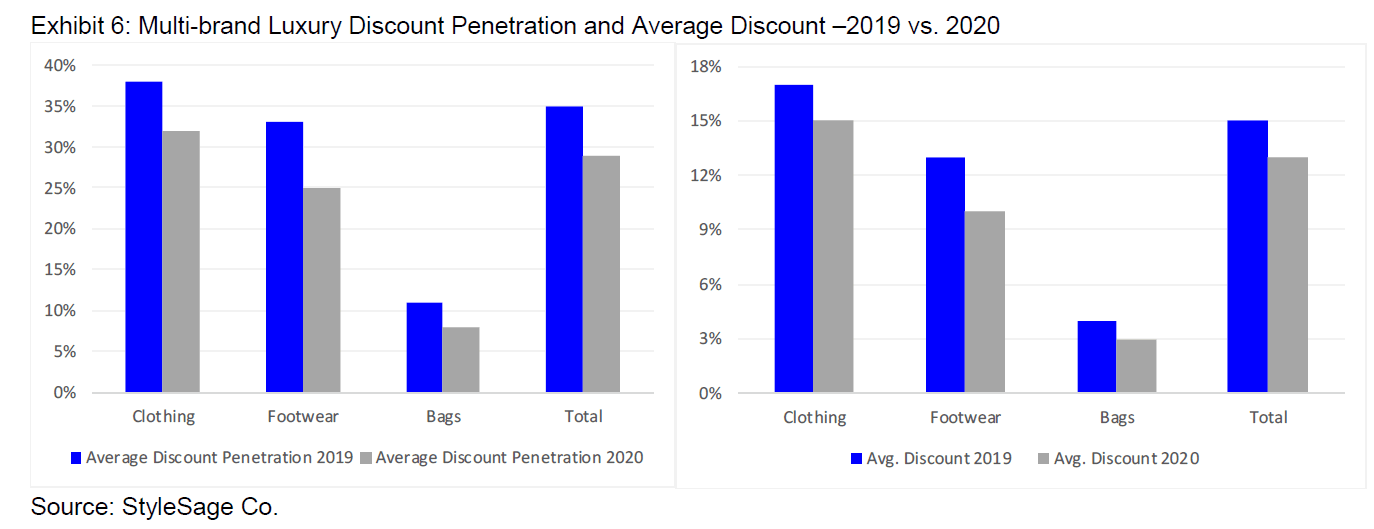The COVID-19 pandemic has caused retailers, manufacturers and businesses to close their physical stores around the world. It has disrupted the natural economic cycle and imposed a hard stop on the global economy, making it difficult to predict when we will see a restart.
Q4 2019 hedge fund letters, conferences and more
As retailers close their physical stores, consumers are forced to shop online. To track the online trends, Refinitiv partnered with StyleSage Co., which analyzes retailers, brands, online trends and products across the globe. We tracked the average discount percentage retailers are offering and how much retail assortment is on sale since the coronavirus outbreak.
The Increase In Discount Penetration
Here are some highlights during the coronavirus pandemic:
- 89.6% of total U.S. retail spending still happens in stores, and profits will take a hit given that stores remain closed and are incurring expenses while paying employees.
- The Refinitiv Ipsos consumer confidence index has also taken a hit as consumers become significantly more concerned about the future of the economy and their job situations. This concern is trickling down to earnings.
- Correspondingly, analysts polled by Refinitiv are also cautious about Q1 2020 earnings expectations, especially since many retailers lowered their earnings guidance for Q1. For Q4 2019 retailers have an 8.9% estimated earnings growth rate, which is expected to drop to -2.3% for Q1 2020.
- The active sportswear group globally has experienced an ever-so-slight increase in discount penetration (how much of the assortment is on sale), but no real change in the average discount amount, according to StyleSage Co. data.
- U.S. mall stores have been experiencing weak traffic and sales over the past year, and might be at bigger risk of default as per the StarMine Combined Credit Risk model.
- Discount penetration and average discount have gone up for U.S. mall stores as well. This is a red flag as the peak winter sales season should have passed by now.
- Luxury names are highly dependent on the Chinese consumer and have closed hundreds of stores in mainland China and across continents, thus lowering earnings guidance.
E-commerce trend
In the U.S. alone, consumer spending accounts for about two thirds of the U.S. economy. The amount of money consumers spent online continues to rise, but still only accounts for 11.4% of total U.S. retail sales (Exhibit 1).
This means that the bulk of retail spending (89.6%) still happens in stores and profits will hurt given that retailers are incurring expenses as they pay employees while stores remain closed. Meanwhile, the Refinitiv Ipsos consumer confidence index has also taken a hit as consumer become significantly more concerned about the future of the economy and their job situation. And this concern is trickling down to earnings.
Analysts polled by Refinitiv are becoming more cautious about Q1 2020 earnings expectations, especially since many retailers lowered their earnings guidance for Q1. For Q4 2019 retailers have an 8.9% estimated earnings growth rate, which is expected to drop to -2.3% for Q1 2020.
Health and wellness
One of the many challenges retailers face while brick and mortar stores are closed is moving their inventory in a time when shoppers are restricted to online shopping. As a result, they might resort to discounting their products to move the excess inventory.
To analyze the online trends, Refinitiv partnered with StyleSage Co. As consumers’ health and wellness takes a front row seat, we analyze the active sportswear group first, including global retailers in the U.S., U.K., Germany, Italy and France. Athleisure has been a popular trend for some time, and therefore those products haven’t been frequently discounted. The StyleSage data shows that there is definitely an ever-so-slight increase in discount penetration (how much of the assortment is on sale), but no real change in the average discount amount.
Digging deeper into the active sportswear categories, the amount of activewear clothing and the average discount are up globally vs. a year ago, while footwear is down. Notice how the discount penetration for the clothing rose to 31% this year from 29% in 2019, and the average discount in this sector remains the same as last year at 20%.
Most vulnerable - U.S. malls
Meanwhile, U.S. mall stores have been experiencing weak traffic and sales over the past years. Simon Property Group, the biggest U.S. mall owner, closed all its malls for the month of March to keep its shoppers and employees safe during the coronavirus pandemic.
Therefore, mall stores’ profits are becoming more vulnerable to the coronavirus pandemic. The StarMine Combined Credit Risk (CCR) model systematically calculates the default probability (DP%) within the next 12 months for all companies by region. It then ranks those probabilities on a 1-100 scale, with 1 being the lowest score and the highest probability of default. Currently, a number of mall stores are in the bottom quintile, including JC Penney, Macy’s, Gap, and Kohl’s. Their scores of 22 and under also correspond to model-implied credit ratings of CC or worse – below investment grade. The longer the epidemic persists, the worse the financial health of these retailers could get.
Similarly, the StyleSage data shows significant price movements in U.S. mall stores. Since March 8, discount penetration and average discount are trending upwards for this sector. This is a red flag as peak winter sales season should have passed by now. Traditionally, this takes place at the end of January through February. As the coronavirus worries worsened in February, we can see discounting starting to pick back up since the end of February.
When comparing U.S. malls during the month of March to the same time last year, it would also appear that clothing, footwear and bag sales aren't in a good position now, as higher discount penetration and discount amounts rise. This is more prominent in bags where discount penetration rose from 11% last year to 17% this year (Exhibit 5).
The Luxury Sector
High-end retailers rarely discount their products, even in today’s promotional environment. No discounts mean staying true to brand image, selling the illusion of brand exclusivity. Coincidentally, StyleSage’s data shows that luxury brands, including multi-brand luxury retailers across the U.S., U.K., Germany, Italy and France, are not shifting yet in terms of discounting likelihood or actual amount.
Given the importance to maintain the brand’s perception, the luxury group will likely be the last sector to make any major drastic moves on discounting as any discount can tarnish brand image. Starting in 2020, these luxury retailers are discounting less than last year. Not surprisingly, luxury bags have the lowest discounts at the moment, since they are known to hold their value and can be considered valuable vintage items which can hold or increase in value. For some consumers, owning a vintage luxury bag might seem a better investment than the stock market at the moment.
Still, the luxury names are highly dependent on the Chinese consumer and they have closed hundreds of stores in mainland China and across continents. Over 40% of Burberry’s revenue alone is generated in Asia.
Some luxury names have already lowered their earnings guidance because of the coronavirus. Capri Holdings, owner of Michael Kors, Jimmy Choo and Versace, said during its earnings call on Feb. 5: “Given the dynamic nature of these circumstances, the company currently expects the situation in China to reduce revenue by approximately $100 million and earnings per share by $0.40 to $0.45 for the fourth quarter and full year. This estimate could materially change if the severity of the situation worsens, including potential broader impact on our business outside the region if outbound travel and tourist traffic is further restricted out of China and into other countries and regions” (Source: Capri Holdings Earnings Call, Feb 5, 2020).
The coronavirus pandemic is definitely hurting the retail sector and economy globally. However, some will weather the storm better than others. Refinitiv will continue to collaborate with StyleSage to track discount levels in these sectors globally as the pandemic unfolds.

